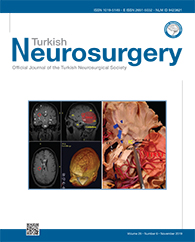2Menemen State Hospital, Department of Neurosurgery, Izmir, Turkey DOI : 10.5137/1019-5149.JTN.26200-19.2 AIM: To describe the location of each white matter pathways around the temporoâparietoâoccipital junction (TPOJ) and the dissections performed using focal fiber dissection and fiber separation techniques (FST). These areas play an important role in human language processing and high-level brain functions. Thus, it is important to identify the association of the fascicles as well as their courses to plan safe and effective surgical target vectors.
MATERIAL and METHODS: Thirty formalin-fixed human hemispheres and two formalin-fixed human heads were dissected with focal fiber dissection and FST under 6â40Ã magnification using a surgical microscope and real-time magnetic resonance imaging navigation system. Two- and three-dimensional anatomical and surgical pictures were obtained and processed using high dynamic range photography (Photomatix) and were correlated to radiological images of the case with glioblastoma of the TPOJ.
RESULTS: The trajectory and connectivity of these fibers as well as their surgical importance in performing FST in cadaver dissections were demonstrated with correlation of the surgical, radiological, and anatomical images.
CONCLUSION: The microanatomy of the TPOJ and related structures, emphasizing the position of each white matter pathway, has been described. Understanding the composition of each region is critical in preventing intraoperative brain injury that could lead to functional deficits.
Keywords : Brain, Temporoâparietoâoccipital junction, White matter, Fiber separation technique, Tractography, Neuroanatomy




